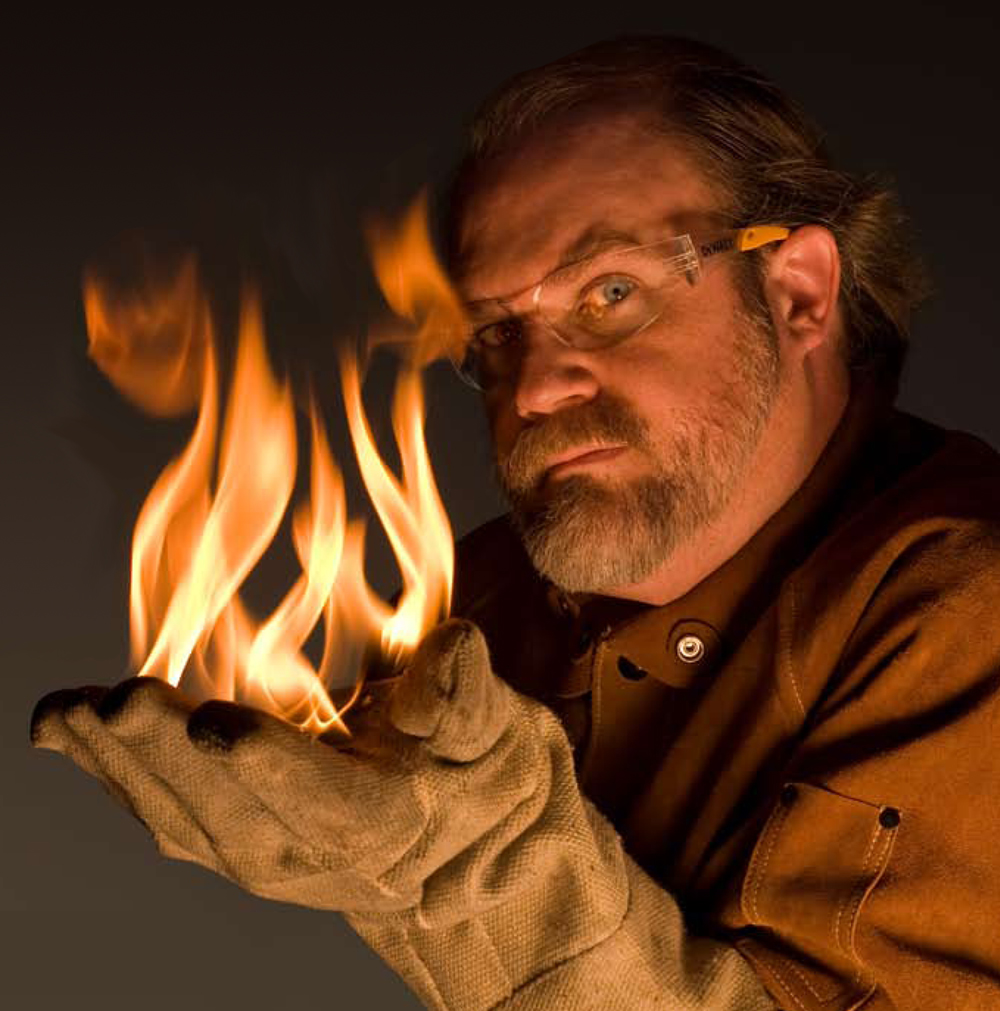Yeah, a periodic table table.
From there, Gray worked his way outward putting out a book called Mad Science detailing some of his most photogenic demonstrations and experiments. It's a heck of a lot of photographic fun and contains instructions on how these experiments can be replicated by the chemically knowledgeable at home. The book is worth the price of admission for the safety disclaimer at the beginning alone.
Real warnings vs. the-lawyer-made-us-do-it warningsThat rocks, man. That's well written and makes the distinction between fake safety warnings and real ones.
It makes me cringe when I see warnings to wear gloves and safety glasses while working with baking soda. It's called crying wolf, and it's deeply irresponsible, because it makes it that much harder to get through to people about real dangers.
So I'm not going to do that. If you promise to listen, I promise to tell you the truth about where the real dangers are.
Some of the experiments in this book I would let my 10-year-old kids do unsupervised (if not for the monumental messes that would lead to). If you're pouring cold sodium acetate solution into a bowl, you are not going to get hurt, at least not by the sodium acetate. It's actually less toxic that common table salt, so unless you keep the salt in your house locked up and wear safety glasses for breakfast, you don't need to worry about sodium acetate.
Some other chemicals, however, are not your friends. Chlorine gas kills, and you hurt the whole time you're dying. Mix phosphorus and chlorates wrong and they blow up while you're mixing them.(I have a friend who still has tiny slivers of glass coming out of his hands twenty years after he made that particular mistake.)
Every chemical, every procedure, every experiment has its own unique set of dangers, and over the years people have learned (the hard way) how to deal with them. In many cases the only way to do an experiment safely is to find a more experienced person to help. This is not book-learning, it's your life at stake and you want someone by your side who knows what they are doing. There is an unbroken chain of these people leading right back to the first guy who survived, and you want to be part of that chain.
When I do an experiment that looks crazy I either have someone with me who's done it before, or it's something that I've worked my way up to slowly and carefully. I build in layers of safety, and I make sure that if all else fails I have a clear path to run like hell (and of course I wear glasses at all times).
I have never been seriously hurt by a chemical, and luck is not a factor in that. Don't make it a factor in your own safety either.
Because you and I aren't Theodore Gray, we're lucky that Theodore Gray also has a column in Popular Science and on their website: Gray Matter.
Check out the coolness that Gray has worked through for us...
Gray Matter: Trapping Burning Gasses With a Thin Wire Screen from PopSci.com on Vimeo.
Gray Matter: Burning Diamonds from PopSci.com on Vimeo.


No comments:
Post a Comment